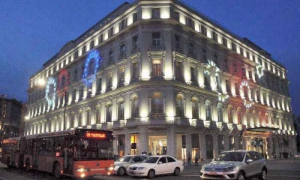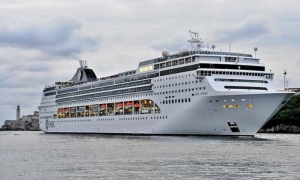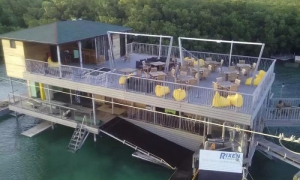
On the morning of December 2, 1956, those young men who, under difficult conditions, risked their lives to try and reach Cuba, didn’t realize that they had landed in one of the island’s natural gems. Focused on safely reaching dry land, getting out of the marshes and completing their mission, they neither had the time to discover nor could they ever have imagined the beauty of such a place.
So great was the crew’s desperation to get ashore that their only goal was to cross the dense muddy mangrove, ridden with insects, as quickly as possible before the enemy could discover them.
After marching for two hours through the dense area, having lost food and weapons, tired, anxious, some sick from the difficult journey, they finally stepped foot on the island’s dry land, on which they had sworn to arrive, no matter what.
After setting off a week before from the Mexican port of Tuxpan the crew had not planned to land at such a difficult point; but bad weather and fate brought them to Los Cayuelos, on the beach of Las Coloradas, in the neighborhood of Belic, Niquero municipality.
Meanwhile, a group of Niquero campesinos, led by Guillermo García Frías, had been waiting for the revolutionaries for three days at another point on the coast, a long way from their eventual landing point. According to García, speaking during the launch of his book, Encuentro con la verdad, he had received a message from Celia Sánchez which instructed him to wait for the expedition on November 30 at the agreed upon locations; the mouths of the rivers Toro and Las Puercas.
“We arrived at around midday to wait for the specified date. We awoke at dawn, our bodies were sore. It was November 30 and nothing had happened. We decided to go back to the cliffs and keep waiting. On Sunday, December 2, I sent Rogelio Vega to go to Niquero to find out if anything was happening in Santiago. Upon his return he told me: ‘Something big is going on in Niquero. All the soldiers are stationed and aren’t letting anyone through to Belic. They’re saying they landed there,’” García recalled.
OVER HALF A CENTURY LATER
After the triumph of the Revolution many people who lived in the mountains surrounding the zone migrated to the cities or the capital drawn by the revolutionary euphoria and the chance for a better quality of life. However the majority stayed, waiting for the promised justice to arrive.
Many of them still remember that time when they were deprived of their basic human rights.
After the Revolution triumphed, and despite the economic difficulties facing the country, the situation in communities and villages throughout the country changed dramatically, the population now had access to free health and education, housing and schools with electricity, fixed-term employment with better wages, family clinics and many other benefits which their parents and grandparents could have only dreamed of.
Some of the new economic initiatives failed to meet expectations; the general development of the population could have been greater; communities suffered the same difficulties as the rest of the population stemming from the U.S. blockade, the Special Period and natural phenomena such as hurricane Dennis, which in July 2005 almost completely destroyed the region. For inhabitants of the area, it is a genuine privilege to belong to the place where Fidel and his comrades began the revolutionary armed struggle which would defeat the tyranny 22 months later.
Footprints of the island’s modern history can be found throughout the 27,545 hectare National Park. At its entrance, the route marking the expeditionaries’ long march through the mangroves, the trails on which many were killed in combat during their attempt to reach the Sierra Maestra.
Residents are also proud of the Vargas Lighthouse, at Cabo Cruz, a structure measuring 31 meters and built in 1871; as well as the beauty of the abundant natural landscape which surrounds. The park is home to truly spectacular geomorphologic formations, such as the Morlotte Hole (52 meters in diameter and 77 deep), Fustete Cave and cliffs of up to 100 meters tall, among others.
Over 80% of the area’s flora is composed of natural forests, where more than 500 plant species have been identified, including 12 unique to the island and a multitude of trees which grow disproportionately, forming fantastical shapes or compact lines.
Many mollusks are also found in the park, such as the endemic Liggus vittatus, which almost looks as though it has been hand-painted, or the remarkable Cricosaura typica (Cuban night lizard), considered to be a living fossil.
The area is also home to a large variety of bird species, some highly endangered. Meanwhile sea life thrives on the marine terraces along the region’s coastline. It’s a curious fact that Punta del Inglés, the southern-most tip of the island, is the only known area on the archipelago where the beautiful Rabijunco bird (Phaeton lepturus) nests.
There is also countless evidence of the presence of indigenous communities in the zone, which left their mark on the walls of caves and in living spaces and cemeteries, including idols of Water gods.
But it’s the marine terraces of Cabo Cruz which characterize the park, a natural phenomenon caused by receding sea levels with steep elevations of up to 100 meters, considered to be one of the most important and best preserved ecosystems on the planet. It’s high environmental and aesthetic values, complexity and size, are what give the Desembarco del Granma National Park its unique character.







